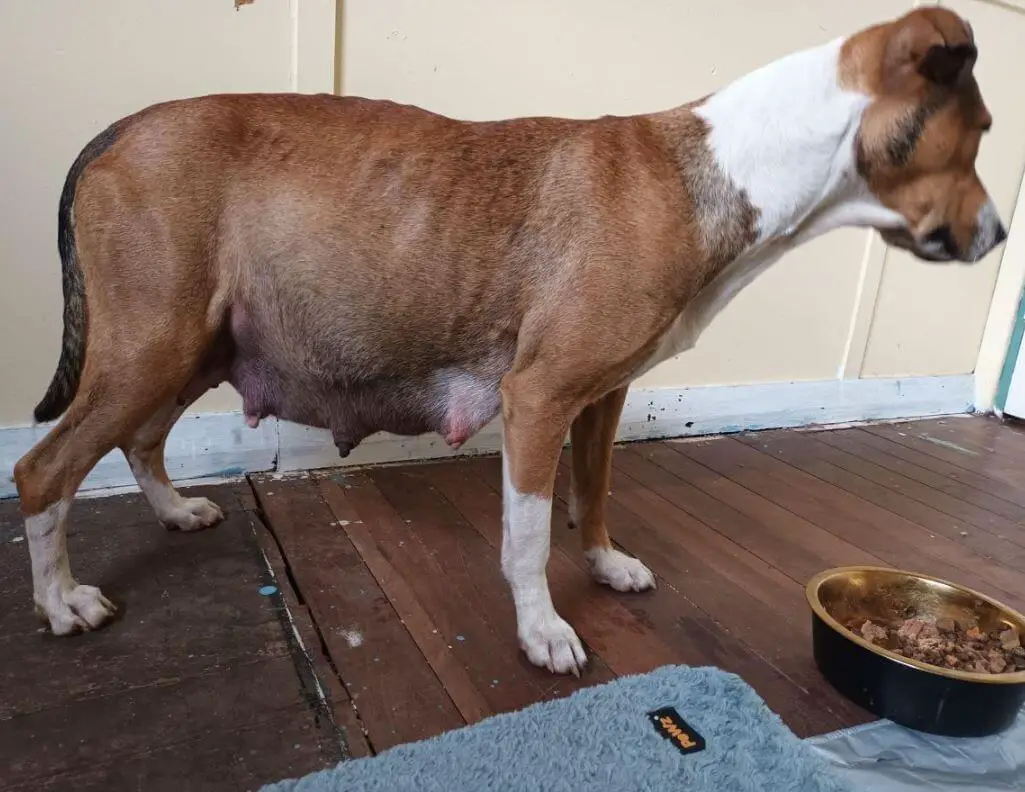Pregnancy in dogs is an exciting but complex journey that every responsible dog owner should understand. Whether you’re planning for a litter of puppies or simply want to ensure the well-being of your pregnant pooch, this article will provide you with a comprehensive guide to dog pregnancy, covering everything from the signs of pregnancy to prenatal care and postnatal considerations.

Understanding the Canine Reproductive Cycle:
- The Estrus Cycle: Female dogs experience a regular reproductive cycle known as estrus, commonly referred to as being “in heat.” During this phase, which occurs every six to eight months, a female dog becomes receptive to mating.
- Mating and Pregnancy: When a female dog mates, fertilization of the eggs by the male’s sperm occurs. Pregnancy in dogs lasts an average of 63 days, although it can vary from 58 to 68 days.
Signs of Pregnancy in Dogs:
While there are no telltale signs of early pregnancy, you may notice the following changes as the pregnancy progresses:
- Behavioral Changes: Some dogs become more affectionate, while others may become more reserved.
- Increased Appetite: Pregnant dogs often experience an increase in appetite during the second half of pregnancy.
- Weight Gain: A noticeable weight gain is one of the most visible signs of pregnancy.
- Enlarged Abdomen: As pregnancy advances, the abdomen of the pregnant dog will become noticeably larger.
- Nesting Behavior: In the days leading up to labor, some dogs exhibit nesting behaviors, such as seeking out a quiet and comfortable spot to give birth.

Prenatal Care:
Ensuring the health of your pregnant dog is crucial. Here are some prenatal care tips:
- Consult Your Veterinarian: Schedule a prenatal check-up with your veterinarian to confirm the pregnancy and establish a care plan.
- Proper Nutrition: Feed a high-quality dog food suitable for pregnant and nursing dogs. Consult your vet for dietary recommendations.
- Supplements: Your vet may recommend supplements like folic acid or calcium if needed.
- Exercise: Maintain regular exercise, but avoid strenuous activities. Short, daily walks are usually suitable.
Labor and Delivery:
When your dog goes into labor, she may display signs such as restlessness, panting, and pacing. Provide a quiet and comfortable place for her to give birth, and be prepared to assist if necessary. If labor is prolonged or your dog appears distressed, contact your veterinarian immediately.
Postnatal Care:
- Mother and Puppies: Ensure the mother is attentive to her puppies and that they are nursing regularly. Puppies should gain weight steadily.
- Vet Check-Up: Schedule a postnatal check-up for both the mother and puppies to assess their health.
- Vaccinations and Deworming: Follow your vet’s recommendations for vaccinations and deworming.
- Weaning and Socialization: As the puppies grow, they will begin the weaning process. This is also the time to start socializing them with gentle human contact and gradual introductions to the outside world.

Pregnancy in dogs is a natural process, but it requires careful monitoring and care to ensure the health and well-being of the mother and her puppies. By understanding the signs of pregnancy, providing proper prenatal care, and being prepared for labor and postnatal care, you can ensure a safe and successful journey through dog pregnancy, ultimately leading to healthy and happy puppies that will bring joy to their future owners.
